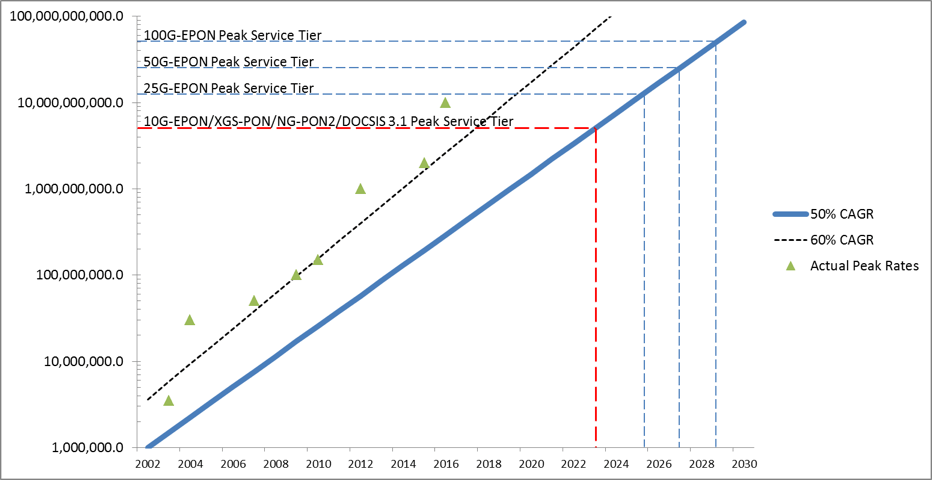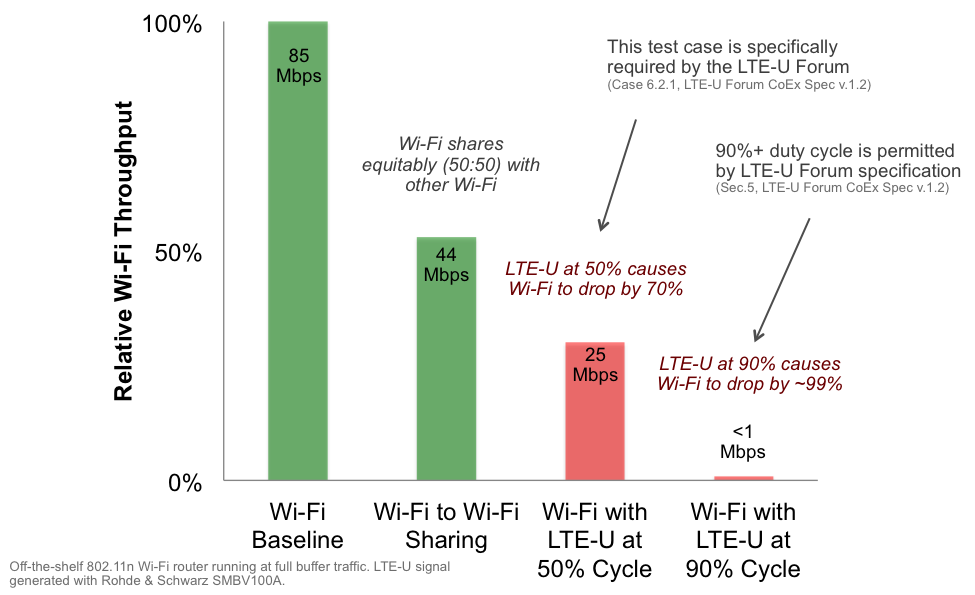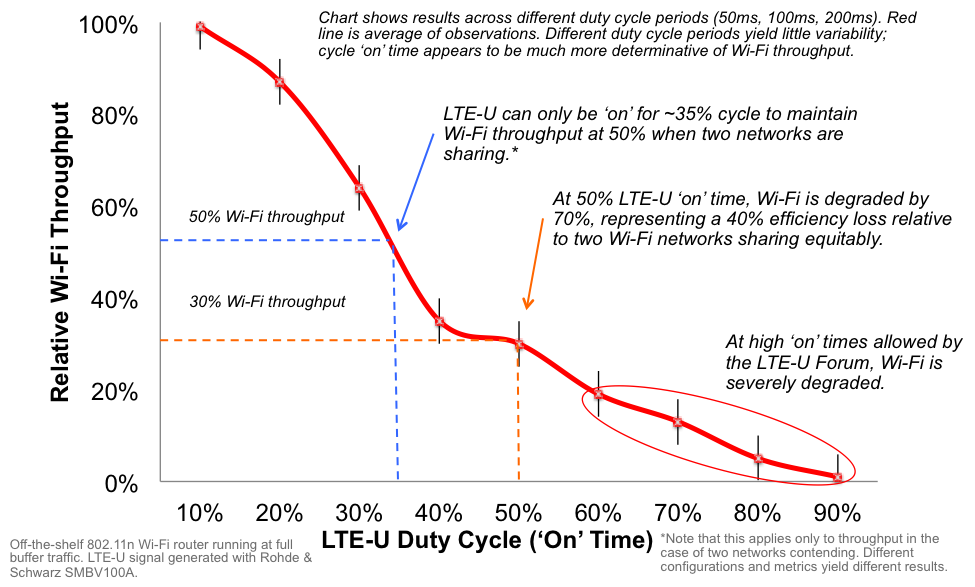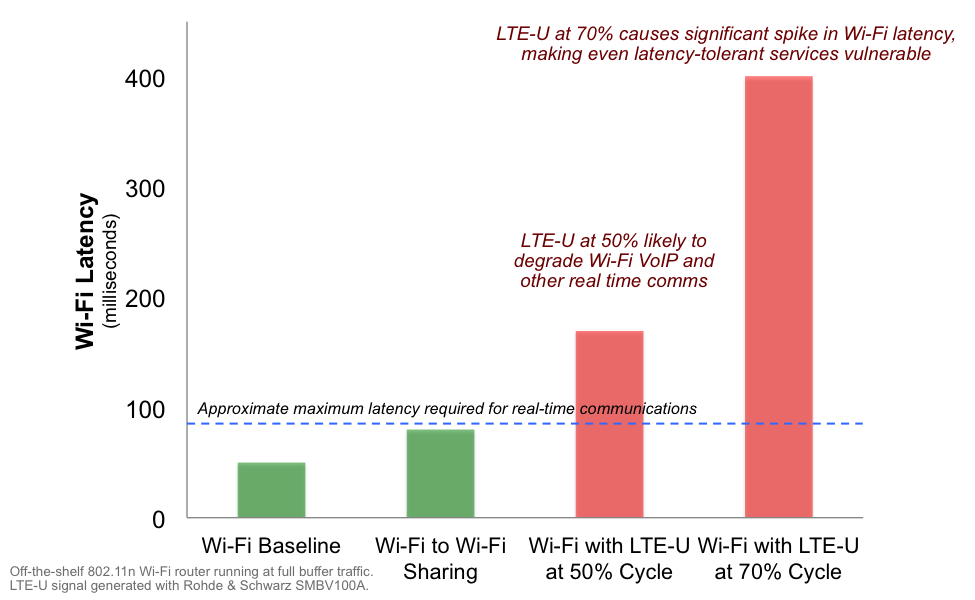Strategy
CableLabs Asia Summit – Impact with a Difference

On December 6-7, CableLabs hosted its first CableLabs Asia Summit and, by all accounts, it was a genuine success. We invited cable’s top leaders from across Asia – including our members in Australia, China, Indonesia, Japan, Singapore and Taiwan – to come together in Shanghai to gain insight, collaborate and learn about the innovation impacting our networks.
CableLabs, together with nine of our members in Asia and key technology leaders from Comcast in the US and Liberty Global in Europe and Latin America, spent two days of complete immersion developing a greater understanding of the unique business, operations and competitive dynamics of the cable operators in Asia, exploring technologies advancing the competitive positioning of operators today, and the innovative technologies that will assure cable’s competitive positioning in the future. Three additional cable operators from China participated in the first day of the summit by way of exploring membership with CableLabs.
All in, 61 individuals across 14 MSOs, CableLabs, and other participants contributed to a highly interactive event. With NPS scores of 75 and 88 across the two days of the summit, value was very much delivered, success defined not only through the content provided by CableLabs, but equally so by way of presentations from across several of our members.
CableLabs presented:
- How innovation is done at CableLabs – and how we are bringing the technologies of the future to reality
- LPWAN IoT opportunities through CableLabs open source LoRa server solution
- Wired and wireless proactive network maintenance
- Machine learning and AI with applications for full band capture for proactive network maintenance, multicast channels for predictive video lineups, cable modem and set-top box patterns to monitor network health
- DOCSIS roadmap – including Full Duplex DOCSIS technology by which cable’s HFC networks can deliver up to 10 Gbps symmetrical speeds
- Coherent optics enabling substantially greater capacity over the same fiber
- 5G and wireless technologies enabling converged networks
Topics presented by our members:
- Comcast provided an overview of its network strategy
- Liberty Global outlined their customer premise equipment (CPE) strategy
- Presentations from our Asian members provided an overview of some of the advanced technologies implemented in their respective regions, including facilitating intelligent communities from Wasu Digital Media, OTT and Android STB solutions implemented by Taiwan Broadband Communications, functional requirements for development of the C-DOCSIS 2.0 specification in China led by Gcable, led by Gcable, and broadcasting video content to connected devices by Henan Cable
- CTO roundtable with senior technical leadership from Beijing Gehua, Chongqing Cable Network, J:COM from Japan and Shenzhen Topway exchanged insights to technical, strategic and competitive challenges confronting their businesses.
Projecting our support internationally by way of regional events is a critical part of our strategy at CableLabs. Through summits and conferences delivered in the regions we represent around the world, we are able to:
- More effectively support member engagement through exchanges and interaction between CableLabs and our members
- Develop critical insights and gain a deeper appreciation of issues that are driving our members in each region
- Assure that the technologies CableLabs is developing are universally applicable across all members
- Create and develop collaboration and community between and across members
- Foster ideas and strategies that feed an innovation engine by way of developing innovative technologies that can be applied across our members
Are you a European member – or a member elsewhere across the regions we serve – interested in collaborating with and learning from your fellow European members? Register now and join cable’s top executives across Europe to gain insight and learn more about future innovative technologies at Inform[ED] Europe May 3-4 in London.
Strategy
CableLabs in Hong Kong: Insights from APOStech 2017

CableLabs participated in the 2nd Annual APOStech conference in Hong Kong July 4-6, 2017 and it was a huge success!
APOStech is designed to unite executives and key stakeholders from the video and broadband industries across the Asia Pacific region to discuss technology innovation and trends that are defining the future of the connected consumer. Over 180 participants from 88 companies around the globe were in attendance, giving CableLabs the opportunity to speak with current members and establish new relationships with other cable operators in the region.
Aravind Venugopal, Vice President with Media Partners Asia (MPA), set the backdrop for the conference by providing an overview of the explosive growth of broadband, pay tv and mobile services in Asia. MPA just released projections anticipating 30 million new broadband homes in Asia over the five year period from 2017-2022 (excluding China). Nearly half of this growth (45%) will occur in India. Pay tv subscribers will increase nearly 30 million, from 244 million to 271 million over this same period (again, excluding China). SVOD subscribers will jump from 54 million to 108 million over the course of the 2017-2022 period.
Among the highly informative learnings from APOStech:
- Only 1 in 10 homes in the Philippines have broadband with an average download speed of 4 Mbps – with the growth of over 2 million additional broadband homes forecast by 2020.
- 100 million of the 275 million homes in India do not have a television. Broadband represents an opportunity for these – and all other – homes. In the Indian economy, prepaid services are dominant, including for broadband and pay tv. Service providers need to think in terms of monthly, weekly and even daily prepaid services. National MSOs have 12% of the broadband market – with the incumbent telecom provider (BSNL/MTNL) reaching 66% of the broadband market.
- In Korea, 58% of pay tv subscribers prefer cable television, this in a country with intense video competition from three national telecom networks (LG, KT and SK Broadband).
- 4K content is expanding across Asia – particularly in China, Hong Kong, Indonesia, Japan and Singapore.
I delivered an overview of Gigabit Broadband Competition in the U.S. – the technologies innovated by CableLabs and its members by which cable operators are now delivering gigabit speeds globally (Click here to see my slide show presentation). I focused on the impact of collaboration across the global cable community in advancing broadband technologies at scale and the competitive leadership this strategy provides to cable operators and their customers by way of enhancing the user experience in the home and workplace.
Jeff Chen, CableLabs SVP of Global Technology, and I hosted an invitation-only event for cable operators attending the APOStech conference. Representatives from 9 MSOs participated – allowing for an in-depth overview of CableLabs and the opportunities provided for its members. Five MSOs across four countries (China, India, Korea and the Philippines) expressed substantial interest in progressing relationships with and learning more about CableLabs, extending invitations for 1:1 meetings with company executives.
We met with four of our members at the conference:
- PT Link Net (Indonesia)
- Shenzhen Topway (China)
- StarHub (Singapore)
- Taiwan Broadband Communications (Taiwan).
We were introduced to senior representatives from seven additional MSOs:
- CJ Hellovision and D’Live (Korea)
- In Broadband and Network18/Reliance (India)
- Guangzhou Digital Media (China)
- Hong Kong Broadband (Hong Kong)
- Kabankalan CATV and the Philippine Cable TV Association (Philippines)
CableLabs’ continued expansion in Asia advances its strategy of world-wide collaboration on technology and innovation for the benefit of the global cable community and the customers they serve. From one member in Asia five years ago, CableLabs has grown to 12 members across Asia and Australia, including: Beijing Gehua CATV Network, Chongqing Cable Networks, Guangdong Cable Network, Henan Cable Network, J:COM, Jiangsu Broadcasting Cable Information Network, nbn, PT Link Net, Shenzhen Topway Video Communication, StarHub, Taiwan Broadband Communications and WASU Digital TV Media Group.
Coincidence or not, CableLabs gained its 60th member on Monday, July 10 following APOStech, Henan Cable, serving Henan Province in China with 4 million video subscribers and 400,000 broadband subscribers.
--
CableLabs is committed to expanding membership and support across Asia and beyond. With 60 members in 35 countries in Asia, Australia, Latin America, North America and Europe, CableLabs provides the opportunity for operators to collaborate with innovators worldwide. Please contact us to discover the value membership in CableLabs.
Strategy
CableLabs is Excited to Participate in APOStech 2017 in Hong Kong

CableLabs is participating in the 2nd Annual APOStech conference this week (July 4-6, 2017) in Hong Kong. Hosted by Media Partners Asia (MPA) and co-sponsored by CableLabs, APOStech is one of Asia’s premier technology and innovation summits. With over 180 participants from around the globe representing cable, telecom and media sectors, the event unites executives and key stakeholders across the Asia Pacific region to discuss technology innovation and trends that are defining the future of the connected consumer.
APOStech affords CableLabs the opportunity to interact with many of our members in Asia, as well as establish relationships with potential new members from countries including India, Korea, Malaysia and the Philippines. This event will introduce CableLabs to the business, strategies, technologies, operations and competition affecting cable operators in regions not currently served by CableLabs to support an increasing diversity of members across Asia.
With broadband subscribers in the region growing to over 560 million by 2021, one of this year’s objectives for APOStech is to address the driving forces and challenges faced by the networks providing content and services to the connected customer. Sessions include insights from broadband network operators across China, India, Indonesia, Korea, Malaysia and Taiwan discussing how cable operators are designing their networks to keep pace with the massive amounts of video data distributed over them and how they are differentiating and monetizing their network investments.
Chris Lammers, CableLabs’ COO and SVP of International Business Development, is providing an overview of Gigabit Broadband Competition in the U.S. The session will also include the technologies innovated by CableLabs and its members by which cable operators are delivering gigabit speeds globally. Chris will focus on the impact of collaboration across the global cable community in advancing broadband technologies at scale and the competitive leadership this strategy provides to cable operators and their customers by way of enhancing the user experience in the home and workplace.
CableLabs’ continued expansion in Asia advances our strategy of world-wide collaboration on technology and innovation for the benefit of the global cable community and the customers they serve. From one member in Asia five years ago, CableLabs has grown to 11 members across Asia and Australia, including : Beijing Gehua CATV Network, Chongqing Cable Networks, Guangdong Cable Network, J:COM, Jiangsu Broadcasting Cable Information Network, nbn, PT Link Net, Shenzhen Topway Video Communication, StarHub, Taiwan Broadband Communications and WASU Digital TV Media Group.
--
CableLabs is committed to expanding membership and support across Asia and beyond. With 59 members in 35 countries in Asia, Australia, Latin America, North America and Europe, CableLabs provides the opportunity for operators to collaborate with innovators worldwide. Please contact us to discover the value membership in CableLabs.
Networks
Keeping Pace with Nielsen’s Law
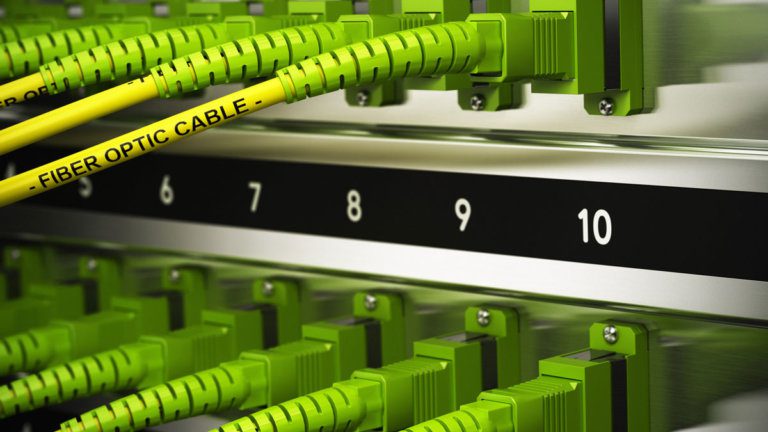
The telecommunications industry typically uses Nielsen’s Law of Internet Bandwidth to represent historical broadband Internet speeds and to forecast future broadband Internet speeds. Mr. Nielsen predicted many years ago the high-end user’s downstream connection speed grows by approximately 50% compound annual growth rate (CAGR). In reality, actual peak service tiers offered by service providers over the years may be following something closer to 60% compound annual growth rate, as shown in the figure below.
The point of this blog is not to debate whether the growth rate is 50% or 60%, but rather if the growth rate continues, how do we evolve our networks to keep pace?
For point-to-multipoint networks there is a general rule of thumb for determining the peak service tier given a particular peak network capacity. This capacity-to-peak-tier ratio of 2:1 isn’t necessarily based in scientific fact, but comes from years of experience that a 2:1 ratio allows service providers to have a reasonable level of confidence that speed test measurements will accurately reflect a user’s subscription level. For example, for a particular access network technology, if the network supports 2 Gbps transmission rates to/from the access termination device (i.e., a cable modem) then the peak service tier typically won’t exceed 1 Gbps.
The present state of the art access network technology peaks at 10 Gbps[1]. The IEEE 802.3 10 Gbps Ethernet Passive Optical Network (10G-EPON) has been deployed in China and the United States. ITU-T has recently consented XGS-PON, another 10 Gbps symmetric PON standard that uses the physical layer of XG-PON (ITU-T G.987.2) and 10G-EPON. Even the ITU-T’s NG-PON2 standard, which uses multiple wavelengths to increase network capacity, only defines a single wavelength per optical network unit (ONU), which puts NG-PON2 on par with 10G-EPON and XGS-PON in terms of meeting peak service tier rates. Finally, CableLabs is now certifying DOCSIS 3.1 devices which are capable of 10 Gbps downstream, and soon will certify 10 Gbps symmetric devices based on Full Duplex DOCSIS technology. What does this mean for accommodating Nielsen’s Law? Assuming the peak service tier trends continue, and given the 10 Gbps peak network capacity of current solutions, the maximum peak service tier will level off at approximately 5 Gbps (see red dashed line in chart above) until technology advances to allow higher rates. The telecommunications industry needs a technology roadmap beyond the current state of the art which allows for peak service tiers to exceed 5 Gbps.
CableLabs and its members, along with other service providers and the IEEE, are determined to stay ahead of the trends displayed in the graph above by contributing to the world’s first 100 Gbps EPON solution as part of the IEEE 802.3ca Task Force. The prevailing sentiment of the 802.3ca Task Force is to create a generational standard that allows for growth of peak network capacity (and corresponding peak service tiers) if and when such growth becomes necessary, without creating a new standard. This growth is expected to be achieved through defining four wavelengths, with each wavelength supporting 25 Gbps. Initial product developments will revolve around a single wavelength to provide a 25 Gbps EPON solution. When market conditions demand it, using two wavelengths along with a channel bonding solution will allow an ONU to transmit and receive at up to 50 Gbps. Similarly, with four wavelengths and channel bonding the ONU will transmit and receive at up to 100 Gbps. Examining the chart above, and assuming historical trends continue, the reader can see the 100G-EPON standard will support peak service tiers out to approximately 2030, give or take a couple years, assuming the 50% CAGR predicted by Nielsen continues.
One of the interesting facets of the 802.3ca Task Force activities relates to the improvement in efficiencies in the media access control (MAC). Previously, the IEEE 802.3 standard did not allow frame fragmentation, but recently with the completion of the IEEE 802.3br Interspersing Express Traffic Task Force, frame fragmentation is now allowed in networks based on the 802.3 standard. The 802.3ca Task Force plans to leverage fragmentation to make transmission more efficient in a multi-wavelength, channel-bonded environment. Additionally, contributions to the 802.3ca Task Force will improve the efficiency of the upstream bandwidth allocation process by allowing multiple service flow queue depth reporting and upstream granting in a single message pair. Considering the ITU-T SG15/Q2 is also investigating 25 Gbps per wavelength, the more promising and exciting aspect of these 802.3ca Task Force decisions is that the next generation of IEEE EPON and ITU-T GPON standards could be more closely aligned than ever before in the very near future! This makes a converged optical access solution closer to reality. (see a previous blog regarding a converged optical access initiative)
In his role as Vice President Wired Technologies at CableLabs, Curtis Knittle leads the activities which focus on cable operator integration of optical technologies in access networks. Curtis is also Chair of the IEEE 802.3ca Task Force.
[1] I’m ignoring point-to-point fiber solutions such as Active Ethernet because these are not typically residential solutions.
Education
Enabling the Transformation of Education
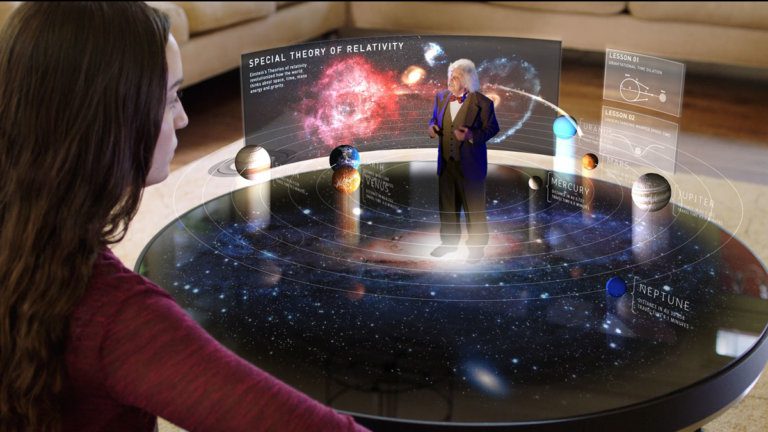
Education, like every other part of life, is being fundamentally transformed by the ubiquity of connectivity and inexpensive computing and storage. Technology is enabling this transformation, but it is driven by the much broader trend in the economy — the transition of the workforce from a manufacturing economy to a knowledge economy.
On July 19-20, CableLabs hosted an Education Summit that brought together thought leaders from across the education sphere and the cable industry to explore the current challenges facing education as well as those of the future. The education system is beginning to see the transformative potential of technology — whether through "one-to-one" initiatives, integration of virtual reality, or gamification. Through the two-day event, three trends stood out in driving a fundamental transformation of education.
Fundamental Shift Toward Experiential and Problem-based Learning
Not surprising to anyone, the need to memorize facts has been largely replaced by Internet search, but unfortunately, the education system is still catching up. The skills for the jobs of today and tomorrow require problem solving, critical thinking, creativity, communication, and collaboration, all skills that are most readily developed through experiential and problem-based learning.
Experiential and problem-based learning can take many forms — "curriculum built on inquiry, project-based learning, internships, service-learning, and entrepreneurial innovation bring the relevance of academic content and simultaneously develop" the necessary skills for the workforce of tomorrow. The current emphasis to more broadly include the development of computer programming skills melds well with a project-based focus, whether developing apps, games, or websites, applying computer science to solve a real world problem is the key. Project-based learning is not limited to the digital world. Makerspaces enable students to create and solve physical world problems using the latest in prototyping and machining technology — 3D printers, CNCs, laser cutters, etc. The key is enabling students to meaningfully contribute to addressing real world problems in their communities.
One amazing example of community-relevant, problem-based learning is the Global Earthquake Forecasting System, which teamed NASA researchers with Alaska high school students in Ketchikan, Kodiak and Old Harbor — where earthquakes and tsunamis pose a significant risk. "Using new cutting edge sensing instruments, the students collect and analyze data used to detect early signals that occur prior to an actual earthquake event. Their findings are then reported to NASA project managers." For their earthquake forecasting work, the Kodiak high school team was awarded first place in 2015 NASA World Wind Europa Challenge, “an annual university-level competition that provides an opportunity for the world's 'best and brightest' to deliver sustainable solutions that serve local, regional, national or international interests.” Not only were they the first ever submission from a high-school team, but they won.
Disruption of Institutions and Curriculum Creation
Learning is no longer limited to the classroom and technology is enabling a fundamental shift of the role of the teacher – from that of "lecturer" to that of "coach." This new paradigm takes many forms and is often referred to as personalized learning, blended learning, or flipped classroom and all have a similar theme of turning the traditional education model inside out and putting the student at the center of an individualized experience.
This new paradigm allows variation, innovation, and “student input into (and even control of) the time, pace, path, and place of learning.” Only with advances in technology and widespread access to connectivity will this new paradigm be able to be implemented effectively, affordably, and equitably.
Ubiquitous connectivity, devices, and inexpensive computing and storage along with low-cost and easy to use tools are also enabling a decentralized approach to curriculum and content creation. Teachers are now able to easily create their own curriculum and content — free from the confines of the traditional text book. The tools for creating and integrating media rich content are readily available. Moreover, platforms, like “Teachers Pay Teachers” enable a market for teachers to exchange the lesson plans and other content they create with other teachers.
Transformative Experience - Immersive and Interactive Virtual Agents
Artificial intelligence (AI) and virtual agents also promise to transform the education experience, just as they will transform entertainment and work. AI and virtual agents will create a platform to preserve and provide history in an engaging format, never before possible. One example is the natural language AI created based on the holocaust survivor Pinchas Gutter. His story will now live on forever through an interactive hologram that can respond to questions about the holocaust and ensure this part of history is never lost.
The promise of AI goes well beyond just preserving history. It will facilitate an individualized and customized interactive experience that has the potential of providing just the right engagement at just the right time to ensure students can successfully achieve the desired education outcome – true personalized learning. AI will not only be able to react to the words we use, but will also be able to read and react to our emotions to facilitate a more comfortable and conducive environment for learning. Using facial and other non-verbal data, the virtual agent will be able to detect fear, frustration, and confusion, among other emotions, to better guide the student’s experience.
All of these trends will drive the network and service requirements necessary to serve the education market of tomorrow – a more decentralized, collaborative, and interactive environment. CableLabs and the cable industry continue to work to develop the technologies required to support a transforming education system — whether that is through increasing network capacity, improving performance, or enhancing network security, to name just a few of our efforts.
Innovation
CableLabs Joins the UK 5G Innovation Centre
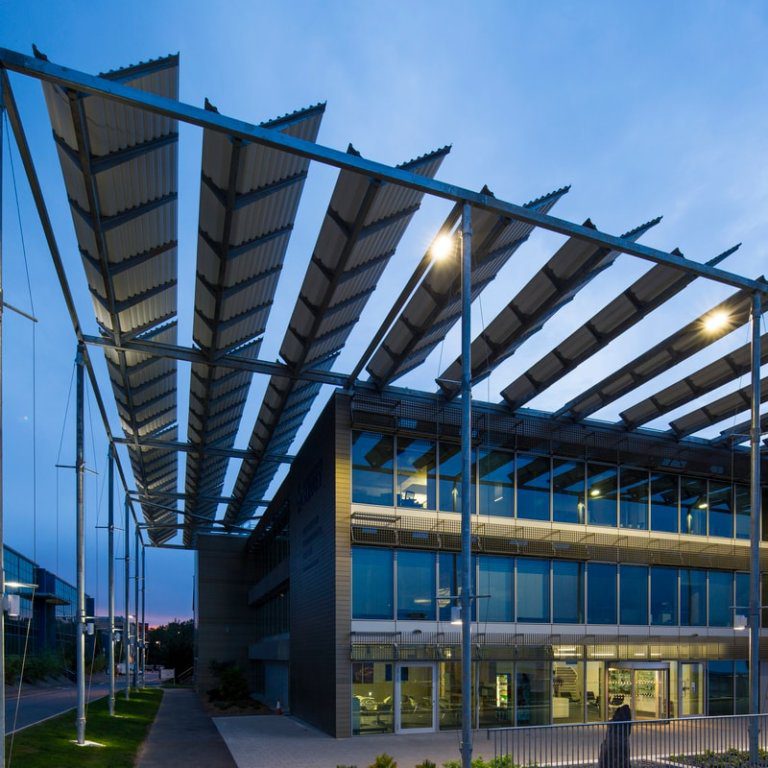
Why is 5G important? 5G, the next generation of mobile communication technology, will redefine communications services and their associated networks over the next five to fifteen years. Whereas the emphasis in the media at the moment focuses very much around the potential for Gbps radio services in the Millimeter frequency bands (mm-wave), one of the most intriguing aspects of the 5G goals is a target of one millisecond of latency for real time network control. This alone would have profound implications for the way that networks are designed and where the content resides. After all, there is no getting around the speed of light. New applications and services will be found for ultra low latency such as augmented reality with haptic feedback in real time, network control of robots and driverless cars.
The mm-wave small cells which will support multi-Gbps services will do so over distances of up to only a few hundred metres at the most. These small cells will require deep dense fibre networks. Therefore, I believe the combination of both mm-wave small cells and low latency will drive the agenda for fixed mobile convergence to be known as 5G. The cable industry is ideally placed here because of its asset position and its continuing deployment of higher and higher speed backhaul as well as its access to content.

Why academic research?
CableLabs has increased its focus on innovation in 2016 by putting several supporting programs in place. Under the leadership of Ike Elliott and Ron Reuss, we have doubled our funding of academic outreach focused on centres of excellence. As a key part of the academic program is 5G, we are supporters of NYU Wireless, under the leadership of Professor Ted Rappaport, which has pioneered the cellular use of mm-wave bands with the development of the associated channel model. This is helping to drive our 5G research, under Belal Hamzeh, in the analysis of the threats and opportunities for the mm-wave wireless local loop. However, because there is more to 5G than the importance of mm-wave, this drove us to join the United Kingdom’s 5G Innovation Centre co-located at The University of Surrey.
UK 5G innovation Centre
The 5G Innovation Centre is one of the world’s leading centres of excellence in 5G and the UK’s largest academic research centre dedicated to the development of next generation mobile and wireless communications. It brings together leading academic expertise and key industry partners in a shared vision. The 5G IC houses 170 researchers and at its heart is a state of the art testbed for trialling emerging 5G ideas.
It is very difficult to cover here all their research activities so just let me give you a taste of their 5G Vision. There is a considerable amount of research into the air interface below 6 GHz to grow both the speed and capacity by 10x. Already some of their research here is likely to find its way into 3GPP - the mobile standards organization. However, at the heart of 5G is content. Current IP protocols are rapidly becoming obsolete since they were designed for a world where communications were point to point oriented. Today, the internet focuses on the distribution and storage of content. To achieve 1mS latency and to improve the associated Quality of Experience, 5G networks will proactively move content closer to the user based on predictive algorithms. Already the 5G IC has shown success rates of 95% in this approach. Associated with this is a movement away from IP to perhaps Information-centric networking (ICN). This is an approach to evolve the Internet infrastructure away from a host-centric paradigm based on perpetual connectivity and end-to-end communications to a network architecture in which the focal point is “named information” (or content or data). These ideas will be at the heart of all networks in the next five to fifteen years. All of these are very active areas of research at 5G IC and CableLabs.
As part of our 5G IC membership, we will sponsor a PhD student while gaining access to the whole output of the centre. We have already identified several areas of interest to cable system operators for the PhD Student such as the use of shared spectrum in both licensed and unlicensed bands or software defined networks for 5G cores. Key to our success in our association with the 5G IC, CableLabs will be working closely in a partnership gaining access to world class academic researchers as well as contribution to the industry consensus on 5G.
Innovation Showcase
UpRamp™ – Connecting Networks, Creating Magic with a New Kind of Accelerator
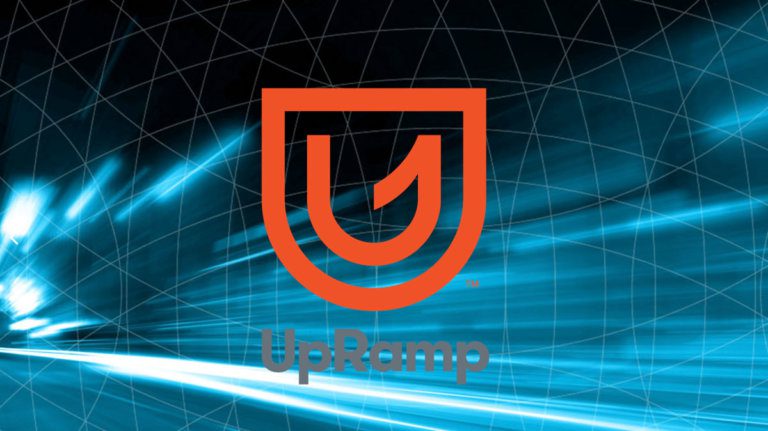
For decades, CableLabs and our member cable operators have been at the forefront of the broadband revolution: connecting hundreds of millions of businesses and households to the Internet, connecting the many internet devices in the home, connecting families and the world to each other.
CableLabs has taken the next step to connect two of the most powerful networks in the world: the exciting and growing network of startup companies, and the largest, most powerful broadband network in the world, run by our 55 global cable operator members.
UpRampTM is a new kind of accelerator designed to skillfully connect startups and cable operators to amplify innovation that improves people's experience with cable. This is a new kind of accelerator for established startups and later stage emerging technology companies, designed to amplify startup success by guiding them to the world’s largest and most powerful broadband network.
Starting in March, UpRamp will open applications for the first startup accelerator designed to help emerging technology companies find true product/market fit within the global cable industry. UpRamp is built to fill the gap between a startup’s time in a classic startup accelerator and their ability to scale a business for the massive cable and broadband industry. Unlike traditional accelerators, UpRamp is closer to an executive MBA for startups; something we like to call a “Fiterator™”.
The UpRamp Fiterator is a 3 month, non-resident program for companies that already have a product in the market, have either raised capital or built a sustaining revenue stream, and are looking to engage real customers in this large and growing market. While most accelerators close their program with a “demo day,” the outcomes of a Fiterator accelerator are real deals and reference customers. This highly selective program is limited to four startups per cohort, with each startup gaining access to our network of over 250 senior level mentors from CableLabs and our member operators.
This past year, CableLabs did a pilot program of UpRamp with DeepField - working with them to find product market fit to great success.
“UpRamp is the logical next step in how CableLabs catalyzes innovation in the industry. DeepField is proud to be a beta tester of the Fiterator accelerator concept. From identifying technology needs to facilitating industry-wide consensus on solutions, UpRamp helped bridge the gap between Deepfield startup innovation and broad industry adoption. Today, Deepfield is deployed in more than 85% of US cable companies and continues to work extensively with UpRamp on new areas of innovation that improve service quality, simplify network operations and power the next-generation of services," stated Dr. Craig Labovitz, CEO, Deepfield.
At CableLabs, our goal is to bring new innovation into the cable ecosystem. With UpRamp, we are putting our expertise into the game, helping young companies find their fit and expand their network - because we believe that people, communities and companies thrive when networks connect. And that is the magic.
Scott Brown is a Startup Catalyst at CableLabs.
Data
UPnP, OIC, and Cable
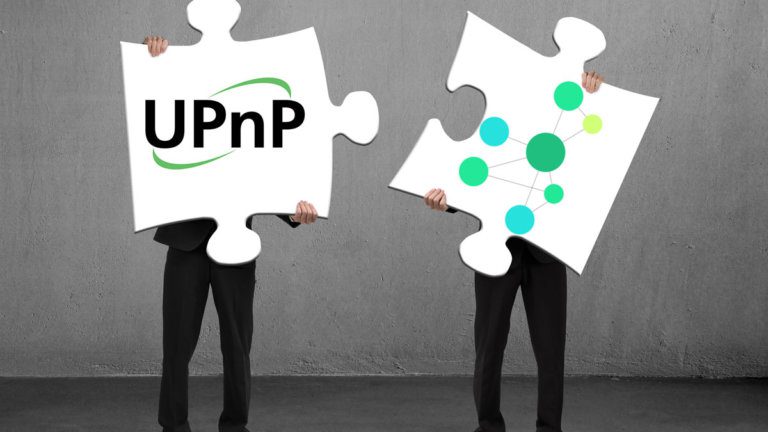
On November 23, UPnP Forum announced that Open Interconnect Consortium (OIC), one of the major standards efforts focused on the Internet of Things, would be acquiring the assets of UPnP forum. The news was generally lauded in the international press as one substantial step in reducing the disarray that is the Internet of Things. This sounds encouraging for IoT in general, but what does it mean for the cable industry?
First of all, it may be useful to review some history. Cable has a long relationship with UPnP Forum. CableLabs has actively participated on the steering committee of UPnP since 2004. UPnP management technologies have been included in cable gateways and set boxes for several years. More recently, the DLNA VidiPath technology (which is based on UPnP specifications) has been deployed by cable companies as a way to provide secure video streams over IP networks to certified video devices. UPnP technology is deployed throughout the cable system. It is, therefore, important that UPnP technologies be maintained as long as they are relevant in the cable industry.
The Benefits of OIC and UPnP Joining Forces
The merger between UPnP and OIC ensures that UPnP will be maintained and supported for as long as cable requires. A UPnP Working Group will be formed under OIC that will maintain and enhance the UPnP specifications and continue to provide certification. This is important for the cable industry because several cable products require UPnP certification. New features currently being developed in UPnP Forum will be completed under the same terms and conditions as current UPnP specifications.
Over the last couple of years, the UPnP Forum has focused about 80% of its efforts on the development of technologies for the Internet of Things. These include the design of a RESTful-based approach for integrating new IoT products. Rather than developing device definitions and defining interfaces as separate specifications (a process that takes several months), new device definitions can be developed using device data models and interface definitions using short RAML interface descriptions and JSON schema files. This process only takes a matter of minutes. Furthermore, such definitions are machine readable and can be used to generate other documents. The specifications themselves are generated from the RAML and JSON code rather than vice-versa. These definitions can also be used to generate code stubs and user interfaces in any language and on any operating system. This approach enable scaling of the Internet of Things and simplifies the development of new products. This may prove to be critical for service providers who intend to provide an IoT service.
UPnP Forum, under the guidance of CableLabs, has not only developed this process, it has created an online tool (called oneIoTa) that allows device definitions to be developed, curated and adopted by UPnP as well as other technologies. This tool is freely available to all UPnP members and, as part of the OIC agreement, will also be available to OIC members. Due to the cooperative relationship between UPnP and OIC since its inception, the data model format for both organizations is identical.
A task group will be formed within the UPnP Working Group in OIC to maintain and enhance the oneIoTa tool. The tool includes a back-end approval system that allows the submitted, crowd-sourced device data models to be approved by individual organizations. In addition to use by UPnP Forum and OIC, liaison relationships have been formed with a dozen or so other IoT organizations. They will be allowed to use the tool for their own data models. The tool has been specially designed so that models can be shared with conversion relationships between these organizations to ensure interoperability between the different ecosystems. CableLabs did the original XML to JSON conversion, and has seeded the oneIoTa tool with the initial device data models. This ensures that these models will work with CableLabs’ IoT interoperability solution and also means that all other UPnP and OIC devices will be based on the same initial models.
The other major architectural element that is common between UPnP and OIC is the approach to remote access. In this case, remote access refers to the usage of these shared technologies from any device, over any IP network, from any location. It means home devices can be accessed from any computer, tablet, smart phone or any other device connected to the Internet. This is done in a secure and scalable way using the common XMPP protocol. Incidentally, AllSeen (another major IoT technology) also adopted this strategy. XMPP allows for all of the OIC and UPnP features to be communicated over the Internet in a way that securely traverses firewalls. CableLabs created the first implementation of this model that shows interoperability between multiple ecosystems (AllSeen, UPnP and HUE). It is simple to understand the idea if you imagine a “chat room” where you can invite your devices as well as your friends and family. You can create virtual rooms for live communication, control of IoT devices, and control access. Since XMPP is the protocol that many chat services are based upon, it is widely available in both commercial and open source versions on most any operating system. It has also been is wide use on a massive scale for several years.
In developing the deal between OIC and UPnP Forum, all parties were careful to ensure that the billions of UPnP products already deployed would continue to be supported. Beyond that, the goal was to enhance both ecosystems ensuring that members are supported from both perspectives. UPnP implementer members will be able to continue to develop and certify UPnP products under the same terms as they always have as long as they continue to pay the annual implementer member fee. There are no changes under this option. Another option is also available. If implementer members choose to sign the OIC membership agreement, they will continue to have the privileges they currently enjoy under UPnP, and will also be able to certify OIC devices. They will also get one free year of OIC gold membership. After that, they can continue their gold membership by paying the annual OIC gold member ship fee (actually less than half the current UPnP Implementer member fee).
The UPnP specifications will continue to be open as will the OIC specifications. There is also an open source project (IoTivity http://www.iotivity.org) that is open to all, will provide a certified implementation of OIC, and will integrate UPnP into the OIC system. In other words, all UPnP products will continue to be supported and will also be made compatible with the emerging OIC ecosystem. Further compatibility will be enabled through the use of the common data model and the oneIoTa tool that will enable this interoperability.
How the Cable Industry will Benefit
CableLabs has been a major contributor to the development of both UPnP and OIC standards and was instrumental in developing a solution at DLNA that leverages UPnP. The merger of UPnP and OIC will enhance these technologies, and OIC, into a system that enables cable operators the offer a coherent and simplified Internet of Things service to cable customers. Using a common data model, a RESTful interface, and a common way to control all of this regardless of device or manufacturer can provide a compelling service that will delight customers and can be efficiently managed by operators.
Consumer
Fair LTE-U Coexistence Far From Proven In CableLabs / Qualcomm Testing
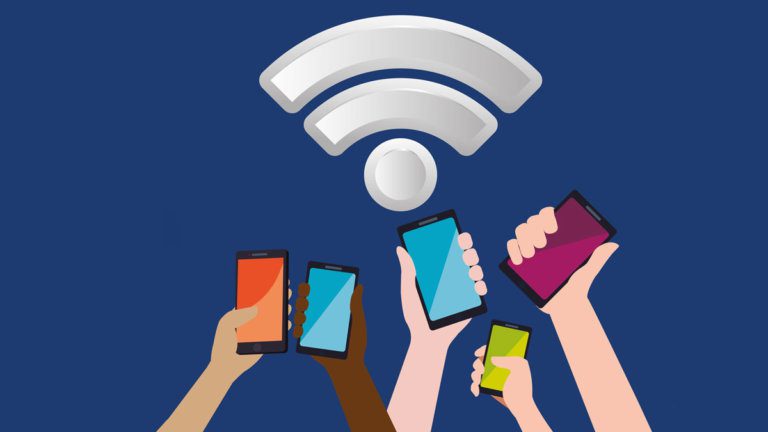
CableLabs has been working hard to ensure that the introduction of LTE into unlicensed spectrum is a win for wireless broadband, and that it does not disrupt the Wi-Fi services that consumers have come to rely on. We have covered in prior posts why that is a challenge, since LTE-U can take advantage of Wi-Fi’s inherent politeness. Here we will review recent technical work we did with a major proponent of LTE-U, Qualcomm Technologies, and explain why that effort only reinforces our concerns.
In brief, we observed that current LTE-U prototype equipment is quite primitive — it is really just in mock-up state at this point — and incapable of demonstrating important coexistence features. The vendor-promised features, most of which are not required or even identified by the LTE-U Forum in its latest specifications, are not yet working to enable fair and reliable coexistence and confidence in testing. In addition, we found that claims of its ability to share fairly rest on a seemingly faulty understanding of how Wi-Fi shares spectrum. For CableLabs, this reinforces the need for a collaborative and open standards development process.
The Wi-Fi community has long sought the same collaborative standards development process for LTE-U that LAA has enjoyed (License Assisted Access LTE is the flavor of unlicensed LTE being developed in the mobile standards body, 3GPP). But in the absence of LTE-U standards development, CableLabs has engaged directly with the promoters of LTE-U in an attempt to do the fundamental research required to find coexistence solutions. Far from converging on solutions, however, our work to date on LTE-U has raised more questions than answers.
Lessons Learned with Qualcomm’s LTE-U
CableLabs recently concluded a brief technical engagement at Qualcomm’s campus in San Diego, which was preceded by a lengthy negotiation of what we would be allowed to test on site. Ultimately, the scope of the plan was much narrower than our guidance and focused on a limited set of basic coexistence tests. It certainly was not the fulsome research that we recommended and is required to address the concerns of Wi-Fi technologists, which we summarized in a presentation to the Wi-Fi Alliance last week.
We began this limited test hoping that we would be able to independently validate the definitive statements of LTE-U proponents that it has been ‘proven to coexist’, and is ‘more friendly to Wi-Fi than Wi-Fi is to itself’.
Unfortunately, our main conclusion from the three weeks we spent on site at Qualcomm is that there is no basis for definitive technical statements about LTE-U coexistence. The reason for this is surprisingly simple: LTE-U is in a prototype phase of development, and does not possess the features that its proponents have noted are important to coexistence.
For instance, Qualcomm has noted that their LTE-U solution will sense the spectrum for Wi-Fi activity and adjust its duty cycle ‘on’ time for rapidly changing congestion conditions. But that is not what we were shown. What we saw was an LTE-U prototype that must have its duty cycle manually programmed; it has no adaptation capabilities at all. There were other issues as well: For example, the equipment did not natively use the 5 GHz band that is targeted for LTE-U, and it only supported a single user device. We will refrain from going on at length here, but as is apparent in the photo below, LTE-U requires substantial further development. In short, we were surprised to see that the state of the art plainly won’t work in the real world, despite assurances to the contrary and claims of comprehensive testing.
Importance of a Common Research Framework
Since LTE-U equipment is not mature, it should come as no surprise that coexistence research leaves much to be desired as well. Statements that LTE-U is ‘more friendly to Wi-Fi than Wi-Fi is to itself’ necessarily rely on a baseline understanding of how Wi-Fi shares the spectrum with other Wi-Fi networks. But, in our three weeks at Qualcomm, engineers spent the majority of the time grappling with that crucial baseline information. The test setup at Qualcomm was uncontrolled and provided strangely imbalanced measurements. Afterwards, a CableLabs engineer replicated the setup at our Colorado facilities with the same make of Wi-Fi equipment, and within a half hour obtained balanced results, suggesting that problematic baseline measurements were somehow endemic to Qualcomm’s research environment. CableLabs and its members regularly test, configure, and operate Wi-Fi networks, and the behavior we observed on-site in San Diego seems quite out of the ordinary. Selected baseline measurements are shown in Figure 2 below, including the expected balanced baseline we observed in our Colorado lab.
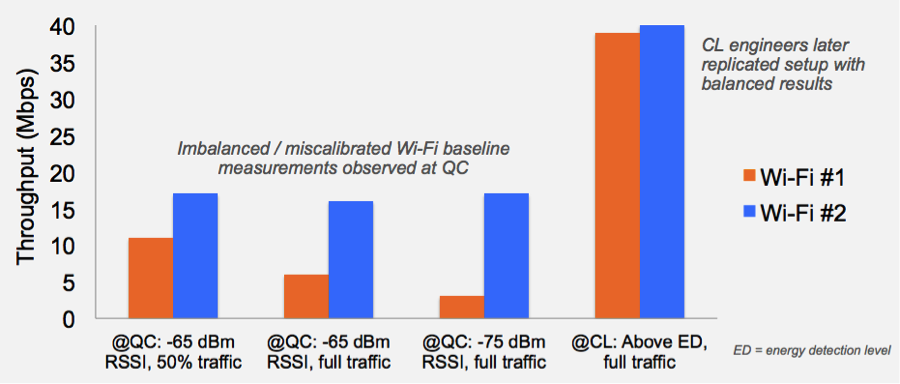
Figure 2: Imbalanced Wi-Fi baseline behavior in Qualcomm research not observed in follow-on CableLabs work
This highlights the fundamental problem with the LTE-U coexistence research done to date: There is no common technical framework in which stakeholders are working, which makes it very difficult, if not impossible, to interpret research results across studies. This is apparent in our limited work with Qualcomm, and in Qualcomm’s prior studies, which also reflect baseline imbalances and call into question the research conclusions of LTE-U proponents.
Since we spent most of our time at Qualcomm working to diagnose apparent problems with the research environment, we did not come close to executing against the already modest test plan developed at the outset. We did however take some limited measurements of Wi-Fi behavior in the presence of LTE-U (which was tuned to 50% duty cycle ‘on’ time, so is only a narrow representation of possible real-world LTE-U configurations).
As seen in Figure 3 below, the impact of LTE-U depends on what your comparison point is: To conclude that LTE-U coexists better than Wi-Fi, one would need to lower the bar as much as possible — using an imbalanced baseline and referencing only the lower end in the analysis. This would clearly be a skewed approach, and even when doing so, it still doesn’t tell a conclusive story — reference the first case in the figure below, where the presence of LTE-U degrades Wi-Fi more than either baseline case. We would submit that the better approach is to diagnose the problems with the baseline measurements, rather than using unexplained results to justify definitive conclusions.
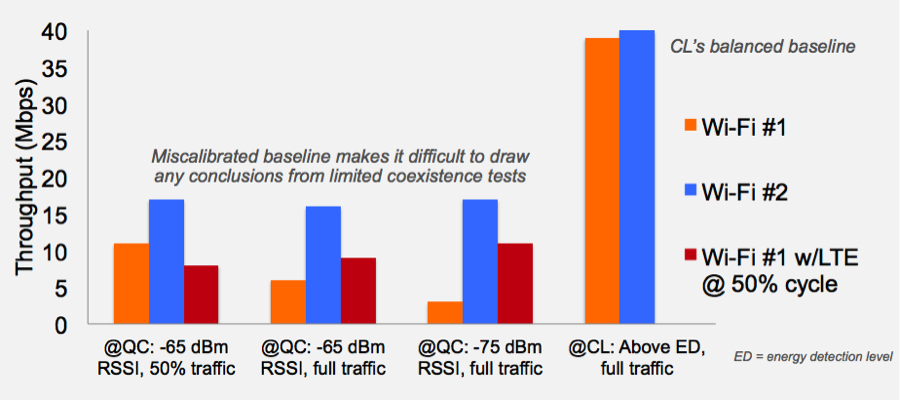
Figure 3: LTE-U coexistence not reliably determined
Furthermore, the in-home research detailed in a recent blog post by our principal architect, Jennifer Andreoli-Fang, made it clear that LTE-U is likely to have a disproportionately negative impact to Wi-Fi when the baseline is properly calibrated. An open standards process with common research methods is clearly needed to drive greater consistency and confidence in results.
We certainly hope that Qualcomm’s LTE-U solution will move from prototype to product in the near future, so that the Wi-Fi community can attempt to validate its coexistence efficacy in an open and comprehensive fashion. But that would only be one necessary step on the path toward equitable spectrum sharing. As we have detailed before, the LTE-U Forum coexistence specification leaves substantial room for different vendor and carrier approaches, which are likely to do disproportionate harm to Wi-Fi.
While this quite limited testing at Qualcomm’s facilities raised more questions than answers for us, CableLabs remains fully committed to rectifying the shortcomings in unlicensed LTE coexistence. Indeed, we have seen more hopeful progress in the development of the global standard form of the technology, LAA-LTE, which we are cautiously optimistic is on a path to coexist well. The more aggressive approach taken by LTE-U clearly poses significant challenges, but we see promise in the open standards process and the particular technical choices of LAA as the basis for a more effective and comprehensive solution.
Reliable coexistence in unlicensed spectrum requires a broadly supported agreement on specific solutions. That is why a collaborative, open standards development process is so important — that is how Wi-Fi is developed. Its success is self-evident in the marketplace.
Rob Alderfer is Vice President of Technology Policy at CableLabs.
Consumer
Wi-Fi vs. Duty Cycled LTE-U: In-Home Testing Reveals Coexistence Challenges
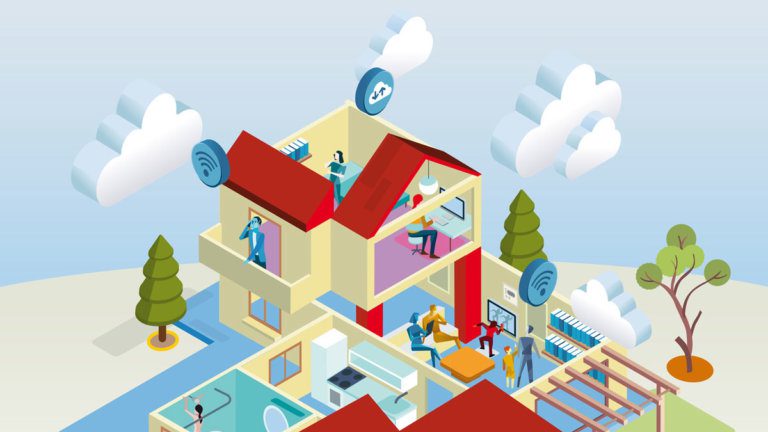
Rob Alderfer, VP Technology Policy, CableLabs and Nadia Yoza-Mitsuishi, Wireless Architect Intern, CableLabs also contributed to this article.
In our last blog on Wi-Fi / LTE coexistence, we laid out the dangers attending the apparent decision of a few large carriers to go forward with the carrier scale deployment of a non-standard form of unlicensed LTE in shared spectrum. This time, we will review some of the testing conducted by CableLabs recently to explain why we are worried. We covered this material at a recent Wi-Fi Alliance workshop on LTE-U coexistence, along with the broader roadmap of research that we see as needed to get to solutions that are broadly supported.
Before we begin, let’s recap: there are different approaches to enabling LTE in unlicensed spectrum: LAA-LTE, and LTE-U. LAA is the version that the cellular industry standards body (3GPP) has been working on for the past year, and its coexistence measures appear to be on a path similar to what is used in Wi-Fi: “listen before talk,” or LBT. In contrast, LTE-U, the technology being developed for the US market, is taking a wholly different approach. LTE-U has not been submitted for consideration to a collaborative standards-setting body like 3GPP, instead it is being developed by a small group of companies through a closed process. LTE-U uses a carrier-controlled on/off switch that “duty cycles” the LTE signal. It turns on to transmit for some time determined by the wireless carrier, then it switches off (again, at the discretion of the carrier) to allow other technologies such as Wi-Fi the opportunity to access the channel.
CableLabs has tested duty-cycled LTE-U in our lab, our office environment, and most recently in a residential environment (test house) to research how technologies are experienced by consumers. Our research to date has raised significant concerns about the impact LTE-U will have on Wi-Fi services. Today we will review our most recent research, which was conducted in our test house.
How We Did Our In-Home Tests
Proponents of LTE-U claim that the technology will be ‘more friendly to Wi-Fi than Wi-Fi is to itself.’ So we decided to test that statement, using our test house to approximate a real-world environment, with technology that would comply with the LTE-U Forum Coexistence Specification v1.2.
(Note that just this week, the LTE-U Forum released a new version of their Coexistence Specification. We’re still looking at it along with the rest of the Wi-Fi community, since it is again a product of their closed process, but we don’t think it changes much for our purposes here. And judging by the discussion at this week’s Wi-Fi Alliance workshop, much work remains to get to reliable coexistence.)
To do our tests, we went to Best Buy and bought two identical off-the-shelf Wi-Fi APs, and we have a LTE signal generator that we can program to cycle the signal on and off – “duty cycling,” in the parlance of the LTE-U Forum.
We first established a baseline of how fair Wi-Fi is to itself. We had our off-the-shelf APs send full buffer downlink traffic (i.e., an AP to a Wi-Fi device), and took throughput, latency and packet loss measurements. We found that the two APs shared the spectrum about equally – throughput was roughly 50:50, for instance.
Next, we replaced one of the APs with LTE-U and repeated our tests, using various duty cycle configurations (LTE ‘on’ times). To make things simpler, we made sure that all of our measurements were done at the relatively strong signal level (-62 dBm) that is used by the LTE-U Forum as the level for detecting Wi-Fi.
What Our Research Found
If our Wi-Fi AP performed better in the presence of LTE-U, that would validate the claims made about it being a better neighbor.
But, we unfortunately did not find that. Quite the opposite, in fact. Our results showed that Wi-Fi performance suffered disproportionately in the presence of LTE-U. Wi-Fi throughput (“speed”) is degraded by 70% when LTE-U is on only 50% of the time, for instance. And more aggressive LTE-U configurations (longer ‘on’ times) would do even more damage, as seen in Figure 1.
Why does LTE-U do disproportionate damage to Wi-Fi? The primary reason is that it interrupts Wi-Fi mid-stream, instead of waiting its turn. This causes errors in Wi-Fi transmissions, ratcheting down its performance. We ran tests across a range of duty cycles to explore this effect. In our test case of two networks sharing with each other, to maintain Wi-Fi at 50% throughput, LTE-U could be on for no more than 35% of the time, as seen in Figure 2.
Does this mean that if LTE-U were to limit its duty cycle to 35% that Wi-Fi would perform acceptably? Unfortunately, it is not that simple. Our test case is admittedly limited: We are showing only two networks sharing the spectrum here, but in reality there can sometimes be hundreds of Wi-Fi APs within range of each other. If LTE-U took 35% of the airtime when sharing with 5 Wi-Fi networks, or 50 for that matter, the Wi-Fi experience would surely suffer significantly. And the problem gets worse if there are multiple LTE-U networks as well, which seems likely.
The effect that LTE-U would have across a range of real-world circumstances is, frankly, unknown. It has not been researched – by anyone. What we do know, based on our work here, is that the 50% LTE-U ‘on’ time considered by the LTE-U Forum when two networks are sharing (see Section 6.2.1 of their coexistence spec) does not yield proportionate throughput results.
That’s the effect of LTE-U on throughput, which is important. But equally important is latency, or the amount of delay on the network, which can have a dramatic impact on real-time applications like voice and video conferencing. We tested Wi-Fi latency across different duty cycles, and the results are seen in Figure 3 below. What’s important to note is that while the two Wi-Fi APs we tested can co-exist while providing smooth operation of real-time communications, that doesn’t appear to be the case if LTE-U is present. Even if LTE-U is only on 50% of the time, it degrades real-time Wi-Fi communications in a way that would likely be irritating to Wi-Fi users. And if LTE-U is on 70% of the time, then latency reaches levels where even latency-tolerant applications, like web page loading, are likely to become irritating.
So, we have seen in our research that LTE-U causes disproportionate harm to Wi-Fi, even when it is configured to share roughly 50:50 in time – which is not a given, as we have noted before. That’s because LTE-U interrupts Wi-Fi signals instead of waiting its turn through the listen-before-talk approach that Wi-Fi uses. We discussed the importance of using listen-before-talk in our last blog, and now you can see why we think it is important for LTE-U.
This research shows that LTE-U is not, in fact, a better neighbor to Wi-Fi than Wi-Fi is to itself, as its proponents claim. What should we make of these competing results? Is one claim right, and the other wrong? It’s not really that simple – the answer depends on how LTE-U is configured and deployed, and what coexistence features it actually adopts.
This highlights the need for the open and collaborative R&D that we have long been urging, so that we can find solutions that actually work for everyone. That has been happening with LAA, the 3GPP standard form of unlicensed LTE, where there is room for cautious optimism on its ability to coexist well with Wi-Fi. Hopefully LTE-U proponents will move toward actual collaboration.
Jennifer Andreoli-Fang is a Principal Architect in the Network Technologies group at CableLabs.
Rob Alderfer is VP Technology Policy and Nadia Yoza-Mitsuishi is Wireless Architect Intern, both at CableLabs, also contributed to this article.


